#UP Madrasa
Text
Government in preparation for changes in madrasas of UP, will have to pass TET to teach children
Government in preparation for changes in madrasas of UP, will have to pass TET to teach children
Madarsa Education: Yogi government is taking a new initiative to change the education being given in madrasas in Uttar Pradesh. Efforts are now being made to make UP-TET exam mandatory for teachers teaching in madrasas. The Madrasa Board has sent a proposal recommending that TET be made mandatory for teacher recruitment in madrassas. Muslim religious leaders are not considering this initiative of…
View On WordPress
#Latest Lucknow News in Hindi#Lucknow Hindi News#Lucknow Hindi Samacha#Lucknow News#Lucknow News in Hindi#Madarsa education#Madarsa Education UP#madarsa school#madrasa education#Madrasa Education UP#Madrasa School#TET Compulsary for Madarsa#TET mandatory for madrassa#TET Qualified Teacher#tet qualify teachers#UP government#up govt#UP Madarsa#UP Madrasa#uttar pradesh news#yogi adityanath
0 notes
Text


#by far the most beautiful place I’ve visited#Madrasa Ben Youseff#1 of 2#I broke up this following set of pictures into two post because the details matter and 4 photos in one post wouldn’t do it justice#and neither do these but this is what we have#lol#morocco
52 notes
·
View notes
Text
so far, nearly 3 weeks on from the inauguration of ram mandir, indian authorities have demolished as many masjids and/or madrasas.
30.01.24 - akhoonji masjid & madrasa in delhi, also destroying a cemetery, shrine and all the students’ belongings in the process.
01.02.24 - a madrasa in maharashtra despite facing opposition from local muslims and one day before its scheduled court appeal.
08.02.24 - a masjid & madrasa in uttarakhand. this comes one day after uttarakhand became the first state to pass the uniform civil code (x, x) which aims to apply a ‘hindu code’ to all indians, infringing on the rights of dalits, adivasis, sikhs, christians, buddhists and muslims (i.e. anybody non-hindu) to practice their religion/lifestyle. muslim women protesting the demolition were lathi-charged (beaten with sticks) by police, a shoot-on-sight order was given resulting in 6 muslims killed and 300+ injured in the riots that followed, a curfew was put in place during which hindutva mobs burned down muslim homes and businesses while shouting abuse at muslims.
as always, no prior notice was given and bjp used it’s gold-standard excuse for each demolition, citing ‘illegal encroachment’.
in addition to these masjid demolitions, indian authorities bulldozed 2 neighbourhoods (ghettos, really) in the same timeframe and also without prior notice:
01.02.24 - jasola slum, which, having been around for at least 16 years, should not have been demolished without providing alternative housing, as the delhi slum policy states for slums which came up before 2015. obviously, housing hasn’t been provided.
06.02.24 - panchsheel nagar in mumbai which, having been around since 2011, entitled residents to paid rehabilitation, which has also not been given. this has left over 110 families homeless.
the demographic of both neighbourhoods, surprise surprise, is overwhelmingly muslim, buddhist and dalit.
bjp is enjoying the cover it is receiving from israel’s genocide in palestine to do whatever it wants and is getting bolder by the day. this ‘bulldozer justice’ has been happening for years, but not at such a rapid rate as it is now.
#and bjp’s crimes are always underreported or not reported at all in mainstream news anyway#india#m#!
1K notes
·
View notes
Text
UP News: '2024' में टिकट पाने के लिए BJP के इन पॉइंट्स पर सांसदों का फिट होना जरूरी
UP News: ‘2024’ में टिकट पाने के लिए BJP के इन पॉइंट्स पर सांसदों का फिट होना जरूरी
<p>2024 के लोकसभा चुनाव को लेकर बीजेपी ने अपना नया प्लान तैयार कर लिया है. इस बार के चुनाव में आलाकमान टिकट का चयन 7 बिंदुओं पर करेगी. इन बिंदुओं पर फिट बैठने वाले सांसदों को ही पार्टी टिकट देगी.</p>
Source link
View On WordPress
#2024 Lok Sabha election#abp ganga breaking news#abp ganga latest news#abp ganga news#abp ganga up latest news#abp ganga up news#Akhilesh Yadav#BJP#brajesh pathak#BSP#Cm Yogi adityanath#Congress#Investigation of madrasas in UP#keshav prasad maurya#Madrasas News Today#Mayawati Tweet#OP Rajbhar#PM Modi#shivpal yadav#sp#up bjp#up congress#Uttarakhand latest news#मायावती#मायावती ट्वीट#सीएम योगी आदित्यनाथ
0 notes
Text
यूपी के मदरसा में पढ़ने वाले छात्र-छात्राओं के लिए खुशखबरी, अब हाईटेक तरीके से होगी उनकी पढ़ाई
यूपी के मदरसा में पढ़ने वाले छात्र-छात्राओं के लिए खुशखबरी, अब हाईटेक तरीके से होगी उनकी पढ़ाई
Image Source : FILE PHOTO
UP News
Highlights
मदरसा के बच्चों के लिए मोबाइल ऐप किया गया लॉन्च
अल्पसंख्यक कल्याण मंत्री धर्मपाल सिंह ने किया लोकार्पण
मजदूर के बेटे भी हुजूर बनेंगे: अल्पसंख्यक कल्याण मंत्री
UP News: उत्तर प्रदेश के मदरसा में पढ़ने वाले छात्र-छात्राओं के लिए खुशखबरी है। राज्य के अनुदानित व मान्यता प्राप्त मदरसों के छात्र-छात्राएं अब मोबाइल ऐप (Mobile App) से भी पढ़ाई कर सकेंगे।…
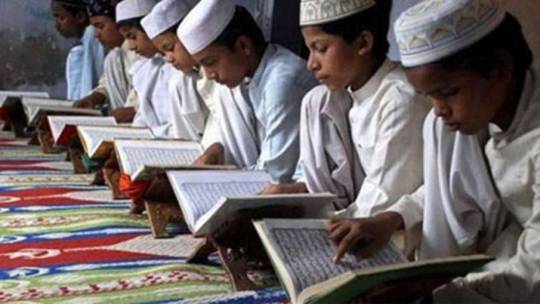
View On WordPress
#App#Hindi News#madarsa#madarsa in lucknow#madarsa study with app#Madrasa e-learning app#Madrasas in UP#Minority Welfare Minister Dharampal Singh#mobile app#News in Hindi#Study#study with app#UP News#Uttar Pradesh Hindi News#uttar pradesh news#अल्पसंख्यक कल्याण मंत्री धर्मपाल सिंह#उत्तर प्रदेश समाचार#मदरसा ई-लर्निंग एप#यूपी न्यूज#यूपी में मदरसे
0 notes
Text
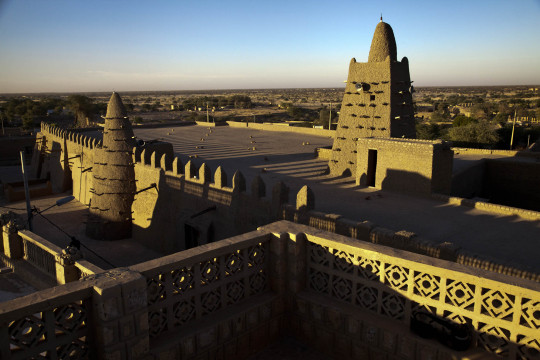
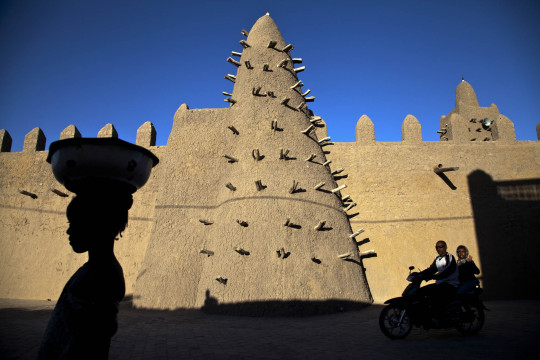


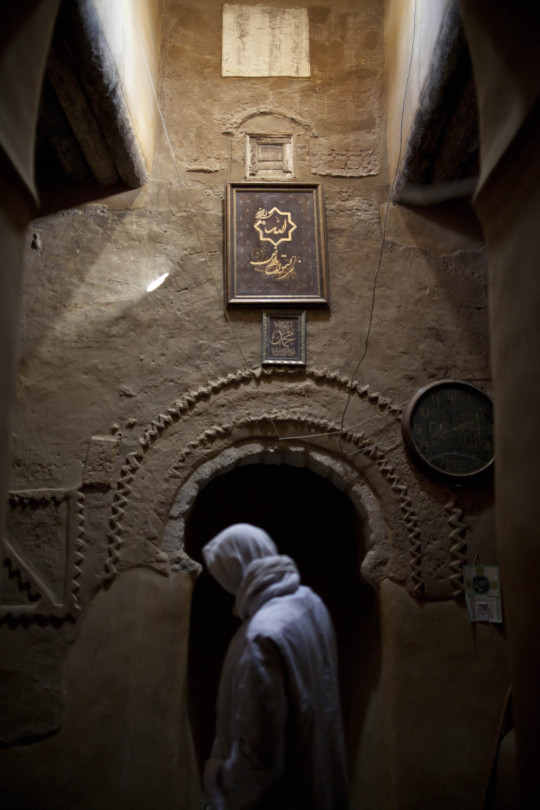
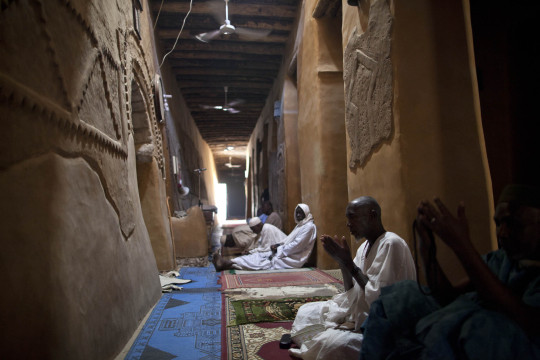
djinguere ber mosque is one of the three historic mosques/madrasas that make up the still-functioning university of timbuktu. this particular mosque was established in 1327 under the reign of songhai emperor askia daoud, and all three mosques flourished in the 15th-16th centuries as the city became more and more renown. natural factors have made the mud mosque vulnerable, but thankfully preservation efforts are ongoing.
#mali#songhai#architecture#interior#details#worship#muslim#nmenam#my posts#couldn't find good high-quality pictures of the general structure which is cool in itself#but these are good pictures too so i'm not complaining#there's more pictures in the last link#also apparently timbuktu was established by taureg people which is pretty cool
18 notes
·
View notes
Note
Hello, this is concerning [https://www.tumblr.com/hindulivesmatter/742021620037713920/your-people-bulldozed-3-mosques-and-a-madrasa-this?source=share] this post.
I do not know about the bulldozing of mosques and madrassas but police open-fired on Muslim protestors because they were not being peaceful. They stone-pelleted the force heavily. They were outright violent and the orders came to control the situation. This happened in Haldwani, btw.
Didn't want to say anything on that anon bc my words here are constantly being misinterpreted. From what I could gather while looking at the news:
The madrasa was built illegally and the people in control of the structure were unable to furnish documents proving it was built legally.
I saw photos of police officers after the ordeal, they were beat-up and bloody. There were also reports of policewomen's clothes being torn.
BJP has been absolutely ruthless in terms of demolishing buildings on illegal land. Both mosques and temples have been bulldozed. So this isn't only an "oh no BJP's targeting Muslims" situation.
The order for demolition was given by the high court.
Both Muslims and Hindus have been hurt and killed in the riot.
They don't want to get it. They just don't.
14 notes
·
View notes
Text
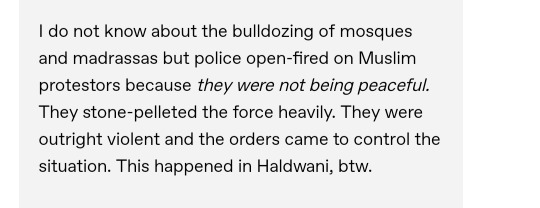
Can you believe how far sanghiblr has gone? To them, open firing on an UNARMED crowd is a perfectly reasonable response to being stone pelted. "Orders came". Where do they think the orders come from?
This is about the Haldwani incident, where the police open fired on muslims who were protesting because an adjoining mosque and madrasa had been razed to the ground. The police killed 6 people.
I shouldn't be surprised but at times I'm just astounded by their cruelty and utter inhumanity. How do these people wake up, look at themselves in the mirror and go about their day?
8 notes
·
View notes
Text
sorry I didn’t mean to lump you in with the other people I want to see disappear I just naturally wound up lumping you in with the other people I want to see disappear
17 notes
·
View notes
Text
Fundraising For Kids At The Masjid
السَّلاَمُ عَلَيْكُمْ وَرَحْمَةُ اللهِ وَبَرَكَاتُهُ
This fundraising page has been set up by yours truly to help the Hifz ul Quran of the masjid madrasa that was built by my own Late Grandfather. The donation will go towards the kids fees (to those who can't afford their Quran classes), their new Eid clothes, food for their families, and other basic necessities for them. Wallahi this initiative means a lot to me and whatever little you can donate, please do so for the sake of Allah swt. As the last 10 days of Ramadan has dawned upon us , giving sadaqah will only increase in your reward.
Those who can donate, please do so even if it's very little. The ones who can't the least thing I would humbly ask is to share and reblog, this still would mean a lot to me.
Jazakallahu Khairan, May Allah swt accept and reward us for our fast and charity on this blessed month of Ramadan, Ameen
23 notes
·
View notes
Text
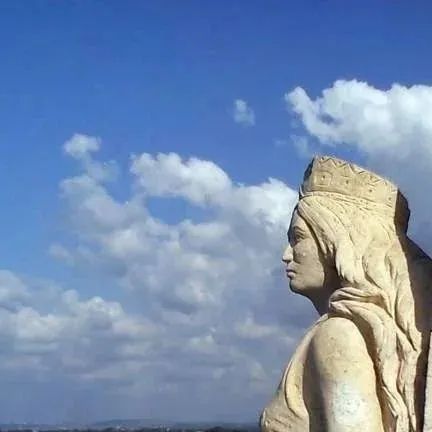

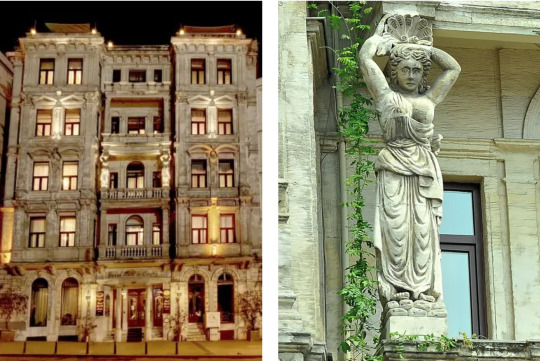
.
.
.
queen zenobia in the middle of the mediterranean sea in lattakia · syria
·
·
·
buckle up and let' s go
·
ISTANBUL
day 1 · arriving at istanbul · welcome dinner
day___ · hagia sophia mosque · basilica cistern · sultan ahmet mosque · · · topkapi palace · grand bazaar · archeological museum · · · istanbul accomodation · Grand Hotel de Londres · dinner time
KONYA
day___ · airport transfer · istanbul ISL - konya airport KYA · konya butterfly valley · meram vineyard
visiting sems-i tebrizi · rumi's mentor · museum of mevlana · madrasa of karatay · konya accomodation · . . . dinner time : )
NEVSEHIR
day___ · konya-nevsehir distance is 230km · 3 hours · heading to cappadocia · derinkuyu underground city · castle of uchisar · guvercinlik · goreme valley · pasabag valley · dervent valley · urgup · nevsehir accomodation · . . . dinner time
ADIYAMAN
day___ · flying to adiyaman · sunset on top of the nemrut mountain · adiyaman accommodation . . . dinner time
DIYARBAKIR
day___ · heading to diyarbakir · distance is 175 km - 2,5 hours · museum of city of diyarbakir · saint suleyman mosque · inn of hasan pasha · diyarbakir ulu mosque 4-legged minaret · surp giragos armenian church · ongözlü bridge · diyarbakir accommodation · . . . lunch time :>
MARDIN
day___ · heading to mardin · distance is 100 km - 1,5 hours · madrasa of kasimiye · monastry of deyrul zafaran · old mardin streets · mardin ulu mosque · historical kızlar high school · mardin accommodation · . . . dinner time is a wonderful time
SANLIURFA
day___ · heading to sanliurfa · distance is 200 km - 2,5 hours · karahantepe · sogmatar · harran · balikligol · sanliurfa accommodation · . . . lunch!
GOBEKLITEPE
Halfeti boat tour · gobeklitepe · archeological museum · airport transfer · sanliurfa GNY - istanbul ISL · back to . . .
.
.
.
3 notes
·
View notes
Text
Sofya i Ark on Zombiecraft
This is a relativly large building I and some of my freinds built on Zombiecleo's Patreon Server Zombiecraft.
The exterior of the mosque itself is inspired by the Ulugh Beg Madrasa in Samarkand and the Masjid-e-Kabud in Mazar, both are perfect examples of early Timurid architecture, which is itself heavily influenced by the Safavids and Mughals (of which it is a type of sister empire). Notable characteristics of Timurid architecture include shorter smooth minarets, large double bulbous domes and wide multi faceted iwans (though without Muqarnas which while popular in ilkhanid and safavid architecture was less common in timurid architecture), All of it of course covered in blue dominated polychromy tilework.
The real life images are taken simply from google and is just meant to show what the text is otherwise trying to describe.


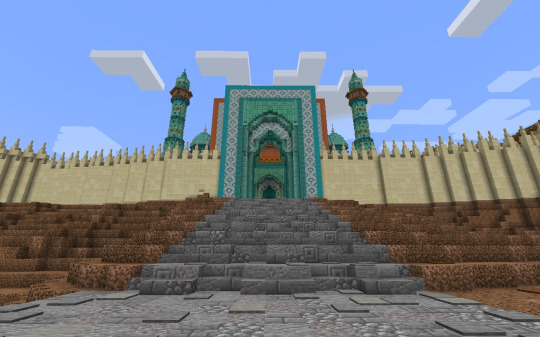
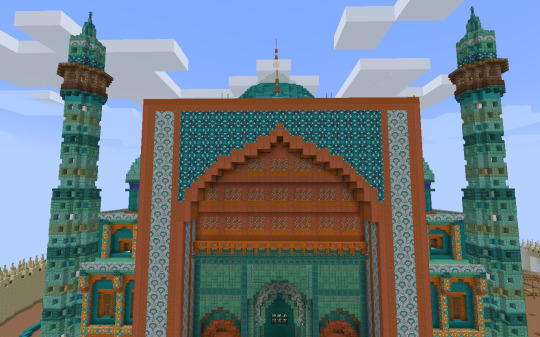


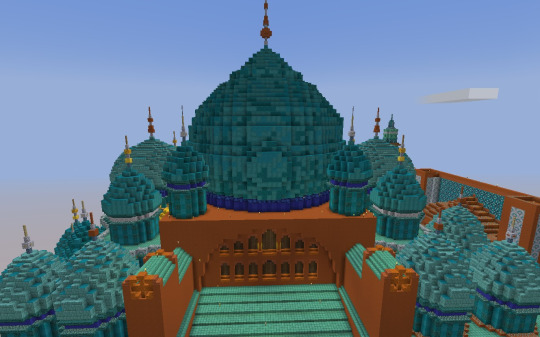
The Sofya i Ark that we built on zombiecraft has taken some liberties to try and fit the interior and exterior together, The interior is based on early 17th century Hagia Sophia though with some liberties to brighten it up as the original block palette was too dark.
Hagia Sophia is one of the prime examples of both byzantine and early ottoman architecture and has inspired most other traditional ottoman mosques.

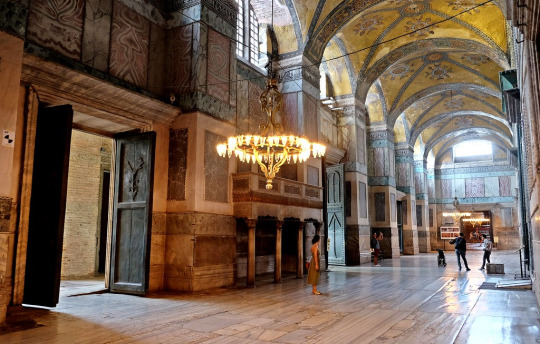



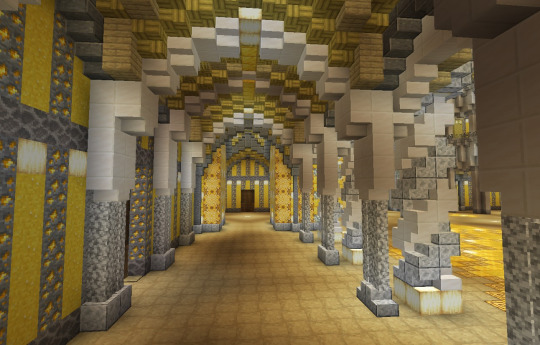
4 notes
·
View notes
Quote
Muslim women students experienced the hijab ban as a denial of their autonomy and agency. As the PUCL team listened to the Muslim girls’ stories close up and large, what became clear was that for them, the hijab is a visible carrier of their self-identity and a way of remaking their own world by freely negotiating with their culture’s normative values and practices. However, they have also had to struggle with their teachers’ negative assumption that they are unaware of being oppressed by their own faith and by a community that does not value education for women. Journalists and political leaders repeatedly asked, “Are they coming to college for studying or for their religion? Let them go to their madrasas if they want to prioritise the hijab.” In insisting simultaneously on their right to education as well as the right to wear the hijab, they are confronting the dominant discourse on the hijab that has obstructed their educational possibilities that have in recent years opened up in Karnataka. In doing so, they are invoking an alternative discourse of gender justice. In this respect, their struggle is at one with the rallying cry ‘Jin, Jiyan, Azadi’ (Women, Life, Freedom) of Iranian women who are protesting the custodial killing of Mahsa Amini, a young woman, by the notorious Iranian ‘morality police’ for wearing her hijab ‘too loosely.’ The slogan ‘Jin, Jiyan, Azadi’ originates in the Kurdish resistance movement in Turkey and reflects similar struggles of women for complete autonomy and liberation. As Apoorvanand and Alishan Jafri argued, ‘Though the contexts of the protests in Iran and India are different, women in both countries are making the same statement. They are telling the state that they want to live their lives as free, thinking individuals – not as dull identical clones. In both cases, it is a battle between individuals and the state for ownership of the self.’
People's Union of Civil Liberties, 'Closing the Gates of Education: Violation of rights of Muslim women students in Karnataka'
#Karnataka#India#PUCL#Muslim women students#hijab ban#Muslim girls#Jin Jîyan Azadî#Mahsa Amini#Kurdish resistance movement#Turkey#Apoorvanand#Alishan Jafri#Iran
13 notes
·
View notes
Note
Given that's the only ship that I know of that we have in common ... 17 and Isabella/Suhail?
Oh wonderful, I love them!!
17:
Which— one of the things I loved most in those books was Isabella describing her “Grey Years” bc it was so real and important. And I’d write something here about Suhail’s grey time, bc he had his own! He went home to help his family, he sacrificed his own academic pursuits, etc! When I think about how Isabella showed up and was like (paraphrased) “this is horribly awkward but here I got you something” and she BRINGS HIM the IN-UNIVERSE ROSETTA STONE I genuinely want to cry, imagine someone bringing you your wildest dream. ANYWAY. I’d really need to reread to write this but it would be a fic where technically! Nothing happens. But it’d be something like:
Suhail, a day in the life, where he’s thinking of walking into the library attached to the bathhouse (styled after the madrasa libraries attached to hammams) to read one or two manuscripts there, but there’s no overarching point— it’s not for a project, the books are poetry but not anything groundbreaking, stuff most kids memorize. So he doesn’t! And—
And he goes to eat with his family instead, and the food is very good, and he thinks about the food he missed while he was gone — because this type of loneliness or dream deferred isn’t straightforward, and there are good parts. And he goes to the bathhouse and watches the man stoke the furnaces and thinks about the poem that is the in-Universe translation of the story of the king who falls in love with the bathhouse furnace man, but his desire is so great that he literally burns up (which I think is irl from Mantiq-ut-Tayr, the title of which references David learning the speech of birds in the Qur’an, which would be a neat linguistic tie-in for my guy Suhail, but I’d need to check that). But Suhail doesn’t feel like that. I think he’s bi in this fic tho, upon consideration?
And he walks out and looks at the moon, and he knows the word for it in many languages but he doesn’t know how they connect, why they clump like fruit pulp in water or spread out or are borrowed. and for a split second you glimpse the grief of what he wanted! He was going to trace the words in those poems everyone knows anyway, the ones he didn’t read today.
Then he turns and goes home for the night, somebody’s son, and 35 days later she rides up from the cities to the South, with a gift.
#my fic#sorta#again need a not-fic tag!#ask replies#sorry this is so messy I wrote it on my phone#and will edit when I’m home 👍
2 notes
·
View notes
Text
Joseph: We're going to pause this for the benefit of anyone who doesn't understand what Medea's talking about:
There's an area in this city officially known as "Historic Cairo", and it contains a bunch of old and densely crowded districts full of mosques, tombs, madrasas, mansions, caravanserais, and fortifications dating as far back as the Islamic era of Egypt, more specifically during the Muslim conquest of 641 CE until the city's modern expansion in the 19th century, hence the nickname: "Islamic Cairo".
Unfortunately, much of this historic area suffers from neglect and decay, making it one of the poorest and most overcrowded areas of the capital. In addition to widespread thefts of ancient artifacts that makes preservation a lot more difficult. And it had only gotten worse when DIO arrived there after his return in 1983...
And get this: DIO has an aura that's so oppressive and evil that even non-Stand users within a 30-block radius can feel it, so much so that many Egyptians abandoned Islamic Cairo entirely, leaving it a total ghost town.
Medea: Actually, the rest of Islamic Cairo are still active, it's only the district where DIO lives that was abandoned entirely, except for criminals and homeless people.
Joseph: Right, okay, not a ghost town, my bad... Anyway, what people soon discover was that DIO's evil aura was unnatural and not just some kind of stomach virus. It was those funky vibes that started the local legend of a "demon" haunting the district...
Many locals started avoiding it during night hours, tourists stopped going there altogether, which effected businesses there pretty badly... Jobs were lost... It's because of that, poverty and crime rates started surging. Even worse the government can't do anything about it, either out of fear or DIO bribed them. This would soon come to ahead, because a month after his arrival to Cairo, the district had its first "demon" attack...
Young woman: *Walking down the dark street* .............. *Hears something* Hm?.......*Shrugs and turns, coming face to face with DIO, shrouded in shadow* AH-*Gets grabbed and gagged*-MMMM!
Homeless woman: *Hears and sees this* HEY! What are you doing! *Throws a glass bottle at him*
Homeless man: *Tackles DIO* Let go of her, you bas-*Gets thrown off*-AH!
DIO: *Jumps over buildings with the young woman in his arms*
Homeless woman: *Goes to the man as she helplessly watches the girl get taken by DIO* !!!!! *Stands up and starts calling out* Help! Police! Someone got kidnapped!
Joseph: It took 3 hours for the police to arrive, it was officially becoming a bad neighborhood.
- Joseph and Medea broke the fourth wall to explain how DIO's Evil vibes caused a district in Islamic Cairo to fall apart, inspired by the Boondocks
#jojo's bizarre adventure#joseph joestar#dio brando#jojo oc#oc#incorrect quotes#the boondocks#breaking the fourth wall
6 notes
·
View notes
Text
The Russian Revolution and the Alash Orda
It’s 1917 and Central Asia is adjusting to a Tsarless reality. To briefly recap, because a lot has already happened and it’s about to get even more complicated:
Russian settlers created the Tashkent Soviet in the city, Tashkent. It is purely Russian managed and was created in response to indigenous organizing.
Various indigenous peoples such as the Jadids, the Ulama, and even the Alash Orda spent all year organizing different organs of government, ending 1917 with the Kokand Autonomy. This is an independent state created in Kokand, a city that neighbors Tashkent, in response to the Tashkent Soviet.
The Bukharan Emir kicked out his Jadids and relied on conservative elements in his society to strengthen his hold on power before Russia returns.
The Khiva Khanate is dependent on a warlord that is planning a coup.
Up to this point, we’ve focused on an Uzbek/Tajik Jadid perspective. Today we’ll be switching focus to the Kazakh and Kyrgyz intellectuals in the Steppe and the creation of the Alash Orda government and the Autonomous Alash state.
Alash Origins
As we discussed in our interview with Dr. Adeeb Khalid, the Muslim world was going through severe soul searching in the 1900s as they tried to understand the rise of European empires and the crumbling foundation of, not just the Ottomans, but Islamic nations in general. This was true in the Kazakh Steppe as well, although for the Kazakh intellectuals, it wasn’t just a question of how does Islam survive, but how do we define Kazakhnessand how do we ensure it survives?
The Kazakh identity crisis was sparked by the land crisis. We’ve talked about this in some of our other episodes, but starting in 1890, Russian settlers streamed into the Kazakh lands, taking important arable land that the nomadic Kazakhs relied on to survive. The Russians performed several exhibitions and surveys in the region between 1890 and 1912 and the Kazakh land grew ever smaller and smaller. Of course, this came to a head in 1916 and by 1917 the Tsar was gone, Russia was in disarray, and the Kazakh peoples had an opportunity to create their own government and address land rights.
Yet, while there was a real threat from Russian incursion, the Kazakhs also took advantage of opportunities the Russian presence offered. Many Kazakhs learned Russian and went to school in Russian run schools as well as local Kazakh schools (as opposed to the madrasa education mandated in places such as Tashkent and Bukhara), they had a long history of trading and even working with Russians, and the Kazakhs were also familiar with the Tatars and even the indigenous people of the Siberian oblast that the Russians relied on to support their colonial administration. And in an odd way the land crisis brought the Kazakhs closer to their Kyrgyz and Bashkir neighbors because they were experiencing the same problem.
This connection with Siberia seems to have provided the Kazakh intellectuals the support they needed to survive Russian persecution and take their ideas and grow it into a full-fledged movement. In fact, there is a great article by Tomohiko Uyama which details how the Russia attempts to banish important Kazakh activities such as Akhmet Baitursynov and Mirjaqip Dulatov to the outskirts of the Steppe (and sometimes in Siberia itself) allowed them to make widespread connection with other activities as well as each other and only fanned the flames of their work.
Akhmet Baitursynov described this time in Kazakh society as being caught between “two fires”: the influence of Muslim culture and the influence of Russian and Western culture. Out of this tension came the Alash, modernizing intellectuals. But even the Kazakh intellectuals couldn’t decide what was the best way to save Kazakhness, so they split into two big-picture groups: the Western-centric modernizers who were the editors for the newspaper Qazaq and the Islamic-centric modernizers who were the editors for the newspaper Aiqap. Some of the most important editors of the Qazaq newspaper was Akhmet Baitursynov, who was editor-in-chief, Alikhan Bokeikhanov, and Myrzhaqyp Dulatov, and they would go forth to become key members of the future Alash state. Some of the most important editors of the Aiqap newspaper were Mukhamedzhan Seralin, Bakhytzhan Qaratev, and Zhikhansha Seidalin.
What was the Alash platform? The two key pillars of their platform were land rights and preserving Kazakh identity.

Akhmet Baitursynov, Alikhan Bokeikhanov, and Myrzhaqyp Dulatov
[Image Description: An image of three Asian men sitting together. The man on the left has short black hair and a droppy mustache. He is wearing glasses and a white shirt, black tie, and black suit. The man in the middle has shaved black hair and a heavy mustache. He is also wearing a white shirt, black tie, and black suit. The man on the right has black hair and thin mustache. he is wearing a white shirt, a black bowtie, and a grey suit.]
Land Rights
We’ll start with land rights, because that is why really differentiates the Steppe from the rest of Central Asia. As we mentioned, the Russians were taking Kazakh land, and making land ownership dependent on one’s sedentary behavior. The Russians also published numerous pieces of propaganda belittling nomadic life. So, the Kazakhs had to determine whether to maintain their nomadic lifestyle or adopt a sedentary lifestyle.
Bokeikhanov, an editor of Qazaq newspaper, argued that the Russians wanted the Kazakh to settle down so they could give even more land (and most certainly the best land) to the Russians while giving the useless land to the Kazakhs and then blaming them for failing. Baitursynov picked up that argument and pointed out that the Kazakhs could not succeed unless they first learned how to farm, but the Russians weren’t interested in that aspect of sedentary life at all. They just pushed the Kazakhs to settle down and worry about the rest later. This could have come out of Russia’s (and the Tatar’s) lack of knowledge of the Kazakh situation but could have also been purposeful ignorance.
Bokeikhanov and Baitursynov argued for a gradual transition to sedentarization due the Steppe’s climatic conditions and lack of agricultural knowledge otherwise they would risk starvation (which Stalin proved in the 1930s). In a series of article, they argued that:
“If we ask what kind of economy is more suitable for Kazakhs-the nomadic or the sedentary-the question is incorrectly posed. A more correct question would be: what kind of economy can be practiced under the climatic conditions of the Kazakh steppe? The latter vary from area to area and mostly are not suitable for agricultural work. Only in some northern provinces do the climatic conditions make it possible to sow and reap. The Kazakhs continue wandering not because they do not want to settle down and farm or prefer nomadism as an easy form of economy. If the climatic conditions had allowed them to do so, they would have settled a long time ago.” - Gulnar Kendirbai, '"We are Children of Alash...", pg. 9
Displaying a better understanding of the science behind climate and agriculture than the Russians or the Soviets that would follow, the editors argued that the climate was the number one factor in nomadism and the Kazakhs could not become sedentary until they learned how to adjust to the demands of the land. Another article argued that sedentarism would lead to failed farming which would lead to wage work which led to great abuses and a higher chance of being converted to Christianity, so the Kazakhs must also learn handicrafts in addition to science. They described the Russian’s disinterested in their arguments as
“One may compare it with the dressing some Kazakh in European fashion and sending him to London, where he would either die or, in the absence of any knowledge and relevant experience, work like a slave. If the government is ashamed of our nomadic way of life, it should give us good lands instead of bad as well as teach us science. Only after that can the government ask Kazakhs to live in cities. If the government is not ashamed of not carrying out all the above-mentioned measures, then the Kazakhs also need not be ashamed of their nomadic way of life. The Kazakhs are wandering not for fun, but in order to graze their animals.” - Gulnar Kendirbai, '"We are Children of Alash...", pg. 10
It should be noted that the Alash did not equate nomadism with Kazakh identity. Instead, they argued that the Kazakhs (and I would argue extend that to the Kyrgyz and Bashkirs) were nomadic for a sensible and scientific reason and if the Russians were truly interested in helping the Kazakhs successfully transition to sedentarism, then they needed to provide the tools otherwise they were setting the Kazakhs up for failure.
Mukhamedzhan Seralin, an editor of the Aiqap newspaper, believed that the sooner the Kazakhs settled down the sooner they could gain a European level education and become competitive in the modern world while increasing the role of Islam in Kazakh society. He argued that:
“We are convinced that the building of settlements and cities, accompanied by a transition to agriculture based on the acceptance of lands by Kazakhs according to the norms of Russian muzhiks, will be more useful than the oppose solution. The consolidation of the Kazakh people on a unified territory will help preserve them as a nation. Otherwise, the nomadic auyls will be scattered and before long lose their fertile land. Then it will be too late for a transition to the sedentary way of life, because by this time all arable lands will have been distributed and occupied.” - Gulnar Kendirbai, '"We are Children of Alash...", pg. 10
The editors of Aiqap argued with the others on the need for greater education, various options for work, etc., but they believed that the Kazakhs could never have these things untilthey became sedentary whereas the editors of Qazap believed that the Kazakhs could not become sedentary until they had those things.
Kazakh identity
This leads to the second pillar in the Alash platform: preserving Kazakh identity.
For the Kazak intellectuals of all stripes, the second most important element of Kazakh society was education and literature. They were worried about the poor education opportunities that centered Kazakhness instead of Russianness, available to Kazakh children. Even after primary school, the Kazakh educational options were limited: either they try to get accepted into a madrassa or go to Russia for further education. The Kazakh intellectuals learned of the new teaching methods the Jadids championed via their southern neighbors as well as the Tatars in the area and used literature to encourage the Kazakh people to focus on schooling.
Akhmet Baitursynov was focused on reforming primary schools and the lack of teaching materials, especially on the Kazakh language. The Qazap newspaper was the only newspaper who wrote in pure Kazakh. Baitursynov answered their detractors as followed:
“Finally, we would like to tell our brothers preferring the literary language: we are very sorry if you do not like the simple Kazakh language of our newspaper. Newspapers are published for the people and must be close to their readers.” - Gulnar Kendirbai, '"We are Children of Alash...", pg. 19
The Kazakh intellectuals resisted the Tatar clergy’s attempts to subsume Kazakh language to the Tatar language, eventually arriving at a compromise. This pressure around language inspired Akhmet Baitursynov to reform the Kazakh language, creating spelling primers, and improving the Kazakh alphabet multiple times. This book was soon used in primary schools. He also published a textbook on the Kazakh language which studied the phonetics, morphology, and syntax of the Kazak language as well as a practical guide to the Kazakh language and a manual of Kazakh literature and literary criticism.
Meanwhile Bokeikhanov focused on creating a unified Kazakh history, believing that “History is a guide to life, pointing out the right way.” Together Bokeikhanov and Baitursynov focused on collecting Kazakh folklore, the history of their cultures and traditions, and shared world history with other Kazakhs through their newspapers. They encouraged Kazakh writers to write down their poems and stories, fearful that they would be lost if Kazakhs stuck purely to an oral tradition.
For intellectuals like Bokeikhanov and Baitursynov, Kazakhness was connected to a cultural identity as opposed to a religious identity. Bokeikhanov supported the idea of separation between religion and state and resisted the Aiqap’s call for introduction to Sharia law. Bokeikhanov believed that they should codify and record Kazakh laws, customs, and regulations to counter corruption and bribery, instead of relying on Sharia law. The Kazakh people had a different relationship to Islam than the other peoples of Central Asia (which may have been why the Russian missionaries were initially confident the Kazakhs would be easiest to convert). While the editors of Aiqap believed that sedentary life would create closer ties to Islam, the editors of the Qazap newspaper believed that Islam was a part of Kazakh society but didn’t equal Kazakh society.
1905 Russian Revolution
We’ve talked quite a bit about what the Alash stood for, but how did this translate into political action? The Kazakhs, like many other Central Asians, were initially excited about the 1905 Revolution, which created a State Duma that “welcomed” Central Asians as members for about two Dumas. When the Kazakhs could participate, they sent Alikhan Bokeikhanov and Mukhamedjan Tynyshpaev.
After the Second Duma, the Kazakhs were no longer permitted to send their own deputies, so they either had to rely on the Tatar deputies of the Muslim Faction of the Russian Duma or find support elsewhere. The Kazakh intellectuals believed that the Tatars had no real knowledge of Kazakh needs and distrusted them. So, they turned to the Russian Constitutional-Democratic Party i.e., the Kadets.
The Kadets sold themselves as an umbrella party that advocated for civil rights, cultural self-determination, and local legislation that would allow for the use of native languages at schools, local courts, administrations, and institutions. Even though the Kadets and the Alash didn’t agree on land rights, they still became allies. The tension between the two parties would not disappear, especially following the 1916 Revolt (which the Alash, like the Jadids, tried to prevent), but they also acknowledged that the Kadets were the only game in town.
1917 Russian Revolution
The 1917 Revolution changed all of that by allowing the indigenous peoples and settlers to create their own forms of government. In April 1917, they would form their own All-Kazakh Congress in Orenburg where they passed a resolution calling for the return of Steppe land to Kazakh peoples, control over local schools, and the expulsion of all new settlers in Kazakh-Kyrgyz territories.
The Alash used 1917 to win local support, focusing on winning the support of the most influential leaders of the local communities and trusting the elders to use tribal affiliations to mobilize the people under the Alash banner. The Kazakh intellectuals dug deep into Kazakh history to unify the people under Alash, the father of all Kazakhs, creating a unified history from creation to modernity. This can be thought of as similar to the Jadids attempts to trace Uzbekness back to Timur.
They also worked with the Provisional Government in Russia, and with the various councils and meetings held by their Jadid counterparts in Turkestan, but ran into great friction because their Tatar, Uzbek, Tajik, etc. counterparts didn’t truly appreciate how important the land issue was for the Kazakhs. They were also wary of the Ulama’s version of a council, wanting to maintain the traditionally limited role of Islam in Kazakh society.
Because of the differences in priorities and the role of Islam, the Alash would go their own way while continuing to support the efforts of other indigenous peoples. They would continue to serve on the various councils and even took part in the creation of the Kokand Autonomy, but knew they needed their own Congresses and their own autonomous state to protect their people and achieve meaningful land reform.
The Kokand Autonomy created three seats for Alash members, believing that two southern Kazakh oblasts would be part of the Kokand Autonomy whereas the Alash wanted a unified Kazakh state. Bokeikhanov explained the Alash’s position as follows:
“Turkestan should first become an autonomy on its own. Some of our Kazakhs argue it would be correct to join the Turkestanis. We have the same religion as the Turkestanis, and we are related to them. Establishing an autonomy means establishing a country. It is not easy to lead a country. If our own Kazakhs leading the country are unfortunate, if we make the argument that Kazakhs are not enlightened, then we can argue that the ignorance and lack of skill among the people of Turkestan is 10 times higher than among Kazakhs. If the Kazakhs join the Turkestani autonomy, it would be like letting a camel and a donkey pull the autonomy wagon. Where are we headed after mounting this wagon?” - Ozgecan Kesici, 'The Alash Movement and the question of Kazakh ethnicity', 1145
The Alash similarly considered joining the Siberian Autonomy movement but broke away once more over the issue of Kazakh autonomy. As Bokeikhanov explained:
“In practice, the autonomy of our Kazakh nation will not be an autonomy of kinship, rather, it will be an autonomy inseparable from its land.” - Ozgecan Kesici, 'The Alash Movement and the question of Kazakh ethnicity', 1146
Failing to find neighbors who would respect their autonomy and facing extreme violence because of the Russian Civil war that was working itself way through Siberia, the Alash would proclaim the creation of the Alash Autonomy during the Second All-Kazakh Congress in December 1917. This would be the first time a Kazakh state existed since the Russian invasion in 1848. This autonomous state would be ruled by the Alash Orda, a government made up of many of the modernizing intellectuals who worked at the Qazap and Aiqap newspapers. Alikhan Bokeikhanov was elected its president. Whatever relief they may have felt at creating a state government must have been quashed by the understanding that civil war was at the Steppe’s door and sooner or rather they would have to choose a side and risk their long fight for autonomy.
References
'Challenging Colonial Power: Kazakh Cadres and Native Strategies' by Gulnar Kendirbai, Inner Asia 2008, Vol 10 No 1
'"We are Children of Alash..." The Kazakh Intelligentsia at the beginning of the 20th century in search of national indeitty and prospects of the cultural survival of the Kazakh people' by Gulnar Kendirbai, Central Asian Survey, 1999, Vol 18 No 1
'The Alash Movement and the question of Kazakh ethnicity' by Ozgecan Kesici, Nationalities Papers, 2017, Vol 45 No 6
'Repression of the Kazakh Intellectuals as a sign of weakness of Russian Imperial Rule'by Tomohiko Uyama Cahiers du Monde russe 2015 Vol 56, No 4
Making Uzbekistan: Nation, Empire, and Revolution in the Early USSR by Adeeb Khalid
Russia and Central Asia: Coexistence, Conquest, Coexistence by Shoshana Keller Published by University of Toronto Press, 2019
#history blog#season 2: central asia#central asian history#central asia#kazakhstan#qazaqstan#qazaq history#kazakh history#alikhan bukeikhanov#Akhmet Baitursynov#Spotify
3 notes
·
View notes